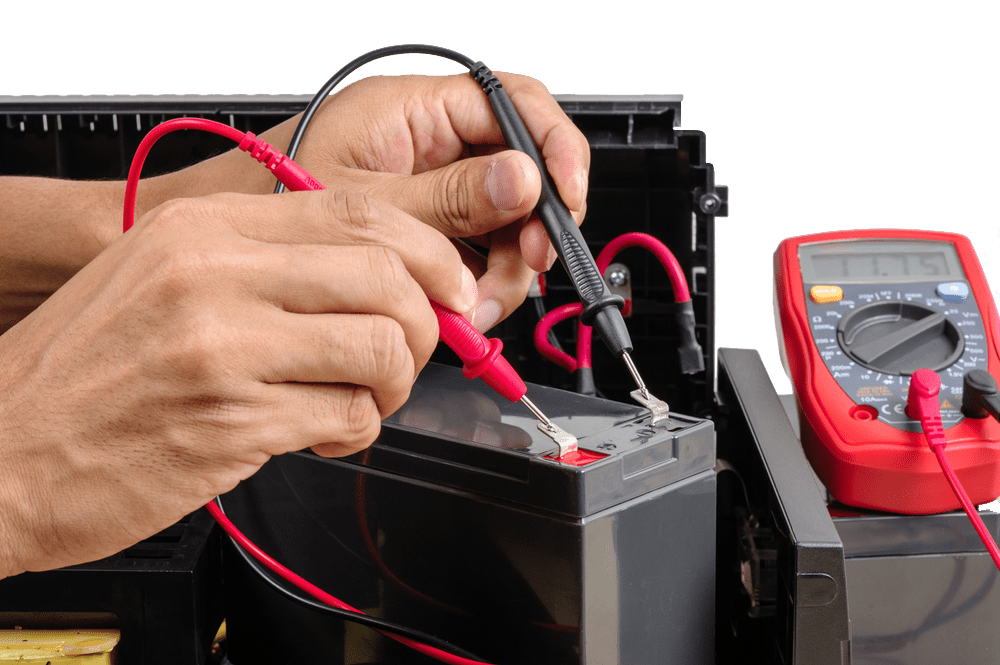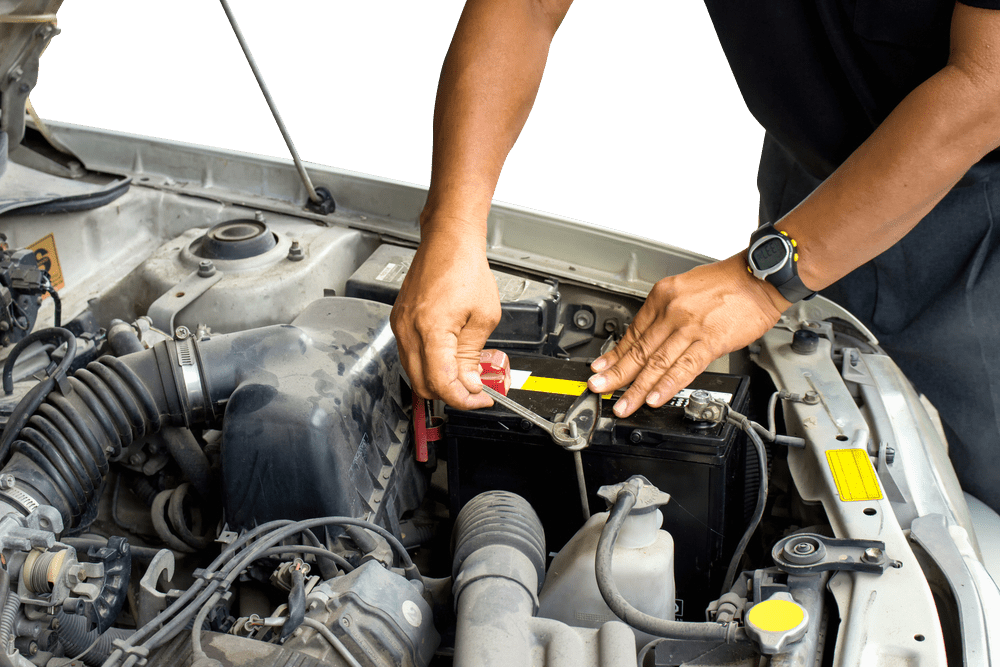- 26 May 2025
Common Mistakes When Choosing a Motorbike Battery

Selecting the right battery for your motorcycle is a crucial decision that affects performance, reliability, and your overall riding experience. Whether you’re a seasoned rider or new to the world of motorcycles, avoiding common pitfalls when choosing a motorbike battery can save you time, money, and frustration. This comprehensive guide explores the frequent errors riders make during the selection process and offers practical advice to help you make an informed decision.
Understanding the Importance of a Quality Motorbike Battery
A motorcycle battery serves as the heart of your bike’s electrical system. It provides the initial power needed to start the engine and supports various electrical components while riding. Despite its importance, many riders underestimate the significance of selecting the appropriate battery, often focusing solely on price rather than quality and compatibility.
The consequences of a poor battery choice range from inconvenient (frequent jump-starts) to potentially dangerous (electrical system failures while riding). By understanding common mistakes when selecting a bike battery, you can ensure optimal performance and longevity for your motorcycle’s power system.
Size and Fit: One of the Most Common Mistakes
Overlooking Physical Dimensions
One of the most frequent errors riders make when choosing a motorbike battery is neglecting to verify the correct physical dimensions. Motorcycles are designed with specific battery compartments, and forcing an ill-fitting battery into this space can lead to several problems:
- Damage to the battery casing: A battery that’s too large may crack or become damaged when forced into a tight space.
- Loose installation: Conversely, a battery that’s too small may shift during rides, potentially disconnecting or suffering internal damage.
- Ventilation issues: Proper fit ensures adequate ventilation around the battery, preventing overheating.
Before purchasing a replacement, always measure your current battery’s dimensions or consult your motorcycle’s manual for specifications. Many manufacturers provide battery fitment guides that match specific models with compatible batteries.

Power Output Misconceptions
Misunderstanding CCA and Ah Ratings
Another common mistake involves misinterpreting battery power ratings. Two critical specifications to understand are:
- Cold Cranking Amps (CCA): This measures a battery’s ability to start an engine in cold temperatures. Many riders mistakenly believe that higher is always better, but excessive CCA can be unnecessary for motorcycles in warmer climates.
- Ampere-hour (Ah) Rating: This indicates how much energy a battery can store. Selecting a battery with too low an Ah rating for your motorcycle’s electrical demands can lead to premature discharge and shortened lifespan.
When choosing a motorbike battery, match these ratings to your specific motorcycle’s requirements rather than simply opting for the highest numbers available. Your owner’s manual typically specifies the recommended ratings for optimal performance.
Technology Selection Errors
Choosing the Wrong Battery Type
The market offers several battery technologies, each with distinct characteristics:
- Conventional Lead-Acid: Traditional, affordable options requiring regular maintenance
- Absorbed Glass Mat (AGM): Maintenance-free, spill-proof alternatives
- Gel Cell: Specialized batteries offering excellent vibration resistance
- Lithium-Ion: Lightweight, high-performance options with longer lifespans
A common mistake is selecting a battery type without considering your specific riding conditions and maintenance preferences. For instance, choosing a conventional lead-acid battery for a motorcycle that experiences significant vibration or infrequent use could lead to premature failure.
Consider factors such as:
- Your maintenance willingness and ability
- Typical riding conditions (temperature, terrain, vibration)
- Expected storage periods
- Budget for initial investment versus long-term value
Ignoring Maintenance Requirements
Misunderstanding Care Needs
Many riders purchase a bike battery without considering the ongoing maintenance requirements. This oversight can significantly reduce battery life and performance. Different battery types have varying maintenance needs:
Conventional Lead-Acid Batteries:
- Require regular electrolyte level checks
- Need periodic distilled water top-ups
- Benefit from regular charging during storage
Maintenance-Free Batteries (AGM, Gel):
- Don’t require water additions
- Still need proper charging during storage
- Benefit from occasional voltage checks
Lithium Batteries:
- Require specialized chargers
- Have specific storage requirements
- May have temperature operating limitations
Before choosing a motorbike battery, honestly assess your willingness to perform regular maintenance. If you prefer a “set-and-forget” approach, the higher initial investment in a maintenance-free option might be worthwhile.
Budget-Focused Decision Making
Prioritizing Price Over Quality
One of the most detrimental mistakes when selecting a motorcycle battery is basing the decision primarily on price. While budget considerations are important, choosing the cheapest option often leads to:
- More frequent replacements
- Unreliable starting, especially in challenging conditions
- Potential damage to your motorcycle’s electrical system
- Added costs for towing or emergency services when stranded
Quality batteries from reputable manufacturers typically offer:
- Longer warranty periods
- Better performance in extreme conditions
- More consistent power delivery
- Superior construction and materials
When choosing a motorbike battery, consider the total cost of ownership rather than just the initial purchase price. A premium battery that lasts twice as long as a budget option often represents better value, even at a higher upfront cost.
Neglecting Climate Considerations
Overlooking Temperature Effects
Environmental conditions significantly impact battery performance, yet many riders fail to consider their local climate when selecting a power source for their motorcycle. This oversight can lead to frustrating performance issues.
In cold climates:
- Batteries lose efficiency as temperatures drop
- Higher CCA ratings become more important
- Some battery types perform better than others in freezing conditions
In hot environments:
- Heat accelerates chemical reactions and can shorten battery life
- Water evaporation occurs more rapidly in conventional batteries
- Certain battery technologies resist heat damage better than others
For riders in extreme climates, choosing a motorbike battery specifically designed to withstand your typical temperature range can dramatically improve reliability and longevity. AGM batteries typically perform well across a wide temperature spectrum, while lithium batteries may require more careful management in extreme conditions.
Installation Errors
Poor Installation Practices
Even the perfect battery can fail prematurely if installed incorrectly. Common mistakes during the installation process include:
- Improper terminal connections: Loose connections create resistance, generating heat and reducing efficiency. Overtightened connections can damage terminals.
- Reversed polarity: Connecting the positive and negative cables to the wrong terminals can damage both the battery and motorcycle electronics.
- Inadequate securing: Failing to properly secure the battery allows movement during riding, potentially causing internal damage or disconnection.
- Neglecting to reset electronics: Some motorcycles require electronic system resets after battery replacement.
When installing a new bike battery, follow the manufacturer’s instructions carefully. If you’re uncertain about the process, consider professional installation to avoid costly mistakes.
Overlooking Warranty and Support
Ignoring After-Sale Considerations
A frequently overlooked aspect when choosing a motorbike battery is the warranty and support provided by the manufacturer. Quality batteries typically come with:
- Comprehensive warranty coverage
- Clear claim procedures
- Accessible customer support
- Network of service centers
Before finalizing your purchase, investigate:
- Warranty duration and terms
- What’s covered (manufacturing defects, premature failure)
- The process for making warranty claims
- Local availability of replacement or service
Selecting a battery with solid warranty support provides peace of mind and potentially significant cost savings if issues arise.
Neglecting Brand Reputation
Choosing Unknown Manufacturers
The motorbike battery market includes established manufacturers with decades of experience alongside newer, lesser-known brands. While some emerging brands offer excellent products, choosing completely unknown manufacturers without research represents a significant risk.
Established battery brands have:
- Proven track records of reliability
- Extensive quality control procedures
- Consistent manufacturing standards
- Available performance data and reviews
Before selecting a battery from an unfamiliar brand, research:
- User reviews and experiences
- Independent testing results
- Company history and manufacturing practices
- Warranty claim fulfillment reputation
While reputable new brands can offer excellent value, completely unknown manufacturers without verifiable quality standards often represent false economy.
Ignoring Technological Advancements
Sticking With Outdated Technology
Battery technology continues to evolve rapidly, yet many riders automatically replace their battery with the same technology they’ve always used. This approach may cause them to miss significant advancements that could benefit their riding experience.
Recent innovations in motorbike battery technology include:
- Enhanced AGM designs: Offering better vibration resistance and longer life
- Smart batteries: With built-in monitoring and protection systems
- Advanced lithium formulations: Providing exceptional power-to-weight ratios
- Improved cold-weather performance: Even in traditional battery types
When choosing a new motorbike battery, research recent technological developments that might address previous pain points in your riding experience. The additional investment in newer technology often pays dividends through improved reliability and performance.
Failing to Consider Riding Habits
Not Matching Battery to Usage Patterns
Different riding styles and frequency place varying demands on a motorcycle’s electrical system, yet many riders don’t consider these factors when choosing a motorbike battery.
For frequent, long-distance riders:
- Durability and reliability typically outweigh other considerations
- Premium batteries often provide better value despite higher initial cost
- Fast recharging capabilities may be important
For occasional weekend riders:
- Self-discharge rate becomes more important
- Batteries designed for infrequent use may be preferable
- Maintenance requirements during storage periods matter more
For commuters with short, regular trips:
- Cold-starting ability may be crucial, especially in winter months
- Vibration resistance for urban stop-and-go traffic becomes important
- Warranty coverage offers significant peace of mind
Assess your typical riding patterns honestly before choosing a battery that aligns with your actual usage rather than aspirational riding habits.
Aftermarket Modifications Considerations
Ignoring Increased Electrical Demands
Many motorcycle enthusiasts modify their bikes with additional electrical accessories such as auxiliary lights, heated grips, communication systems, or high-performance audio equipment. A common mistake is failing to upgrade the bike battery to accommodate these increased power demands.
Signs that your current battery may be insufficient for your modified motorcycle include:
- Dimming lights when using multiple electrical accessories
- Difficulty starting after running accessories with the engine off
- Battery draining more quickly than expected
- Electrical system inconsistencies
When adding significant electrical accessories, consult with a motorcycle electrical specialist about your battery’s capacity to handle the additional load. Upgrading to a higher capacity battery may be necessary to maintain reliability and prevent premature battery failure.
Improper Storage Procedures
Neglecting Battery Care During Off-Seasons
Many riders make the mistake of ignoring their motorcycle’s battery during storage periods, leading to diminished performance and shortened lifespan. Proper off-season care is essential for maintaining battery health.
Best practices for motorcycle battery storage include:
- Using a battery tender or maintenance charger to prevent self-discharge
- Cleaning terminals before storage to prevent corrosion
- Storing in moderate temperatures when possible
- Periodic voltage checks even with maintenance chargers
When choosing a motorbike battery, consider whether it’s designed to withstand your typical storage conditions and whether you’re willing to perform the necessary maintenance during off-seasons.
Making an Informed Decision: The Right Way to Choose a Motorbike Battery
Avoiding these common mistakes requires a methodical approach to choosing a motorbike battery. Follow these steps for the best results:
- Consult your owner’s manual for specifications and recommendations
- Measure your current battery compartment to ensure proper fit
- Consider your typical riding conditions and patterns
- Research battery technologies appropriate for your needs
- Evaluate maintenance requirements against your willingness to perform upkeep
- Read reviews from other riders with similar motorcycles
- Compare warranties and support from different manufacturers
- Calculate total cost of ownership rather than focusing on initial price
By taking a thoughtful, informed approach to choosing a motorbike battery, you’ll enjoy improved reliability, performance, and value from your investment.
Conclusion: Making the Right Choice for Your Motorcycle
Choosing a motorbike battery represents a significant decision that affects your riding experience, safety, and ongoing maintenance costs. By avoiding the common mistakes outlined in this guide—from neglecting proper sizing to overlooking maintenance requirements—you can select a battery that delivers optimal performance for your specific motorcycle and riding style.
Remember that the ideal battery balances multiple factors including technology, capacity, maintenance requirements, and cost. What works perfectly for one rider may be suboptimal for another based on different riding conditions, storage situations, and personal preferences.
Take time to research your options thoroughly before making this important investment in your motorcycle’s electrical system. By choosing a motorbike battery with care and maintaining it properly, you’ll enjoy more reliable starts, consistent electrical performance, and ultimately more enjoyable riding experiences for years to come.











